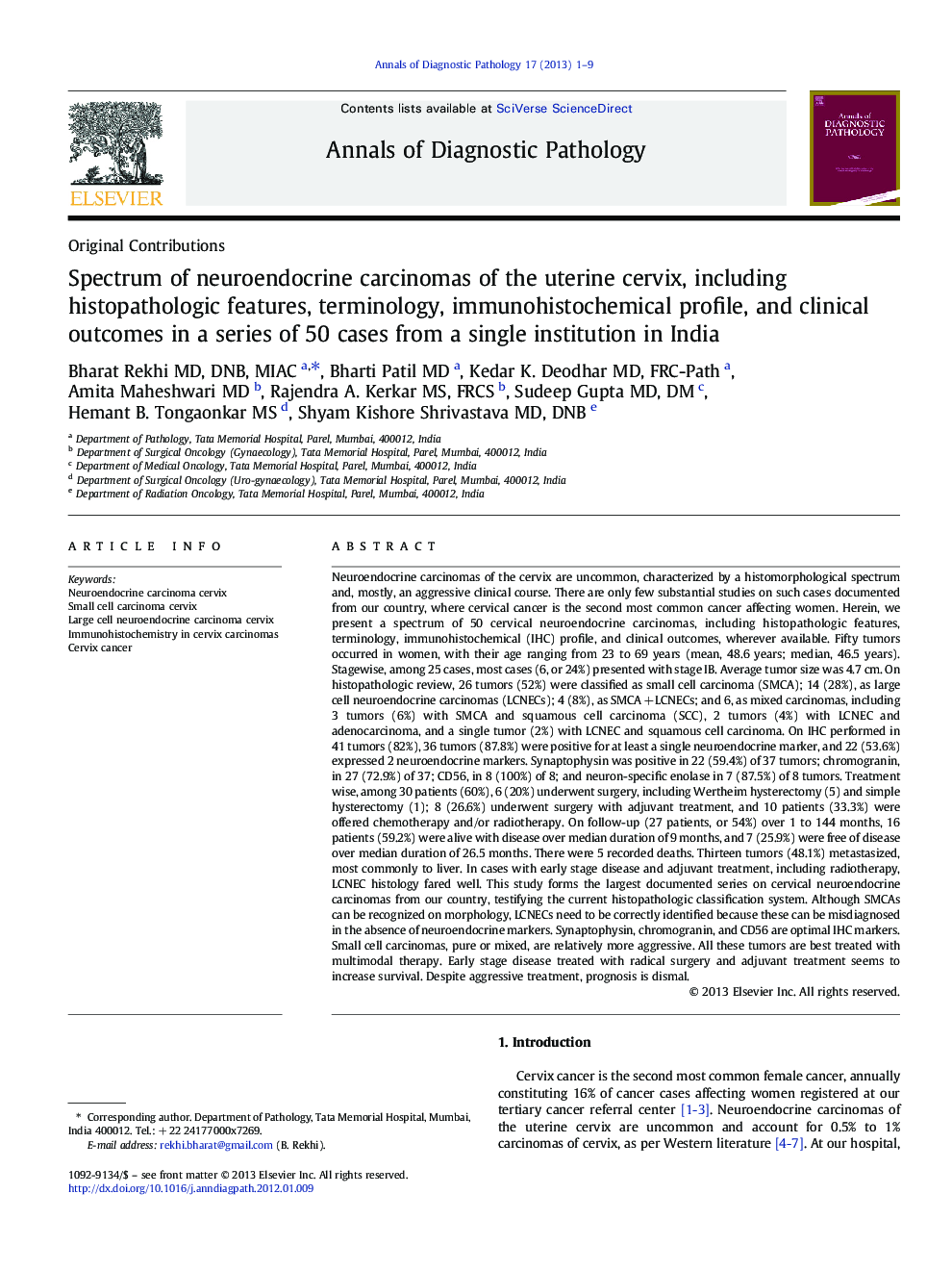| کد مقاله | کد نشریه | سال انتشار | مقاله انگلیسی | نسخه تمام متن |
|---|---|---|---|---|
| 6214985 | 1606493 | 2013 | 9 صفحه PDF | دانلود رایگان |
Neuroendocrine carcinomas of the cervix are uncommon, characterized by a histomorphological spectrum and, mostly, an aggressive clinical course. There are only few substantial studies on such cases documented from our country, where cervical cancer is the second most common cancer affecting women. Herein, we present a spectrum of 50 cervical neuroendocrine carcinomas, including histopathologic features, terminology, immunohistochemical (IHC) profile, and clinical outcomes, wherever available. Fifty tumors occurred in women, with their age ranging from 23 to 69 years (mean, 48.6 years; median, 46.5 years). Stagewise, among 25 cases, most cases (6, or 24%) presented with stage IB. Average tumor size was 4.7 cm. On histopathologic review, 26 tumors (52%) were classified as small cell carcinoma (SMCA); 14 (28%), as large cell neuroendocrine carcinomas (LCNECs); 4 (8%), as SMCAÂ +Â LCNECs; and 6, as mixed carcinomas, including 3 tumors (6%) with SMCA and squamous cell carcinoma (SCC), 2 tumors (4%) with LCNEC and adenocarcinoma, and a single tumor (2%) with LCNEC and squamous cell carcinoma. On IHC performed in 41 tumors (82%), 36 tumors (87.8%) were positive for at least a single neuroendocrine marker, and 22 (53.6%) expressed 2 neuroendocrine markers. Synaptophysin was positive in 22 (59.4%) of 37 tumors; chromogranin, in 27 (72.9%) of 37; CD56, in 8 (100%) of 8; and neuron-specific enolase in 7 (87.5%) of 8 tumors. Treatment wise, among 30 patients (60%), 6 (20%) underwent surgery, including Wertheim hysterectomy (5) and simple hysterectomy (1); 8 (26.6%) underwent surgery with adjuvant treatment, and 10 patients (33.3%) were offered chemotherapy and/or radiotherapy. On follow-up (27 patients, or 54%) over 1 to 144 months, 16 patients (59.2%) were alive with disease over median duration of 9 months, and 7 (25.9%) were free of disease over median duration of 26.5 months. There were 5 recorded deaths. Thirteen tumors (48.1%) metastasized, most commonly to liver. In cases with early stage disease and adjuvant treatment, including radiotherapy, LCNEC histology fared well. This study forms the largest documented series on cervical neuroendocrine carcinomas from our country, testifying the current histopathologic classification system. Although SMCAs can be recognized on morphology, LCNECs need to be correctly identified because these can be misdiagnosed in the absence of neuroendocrine markers. Synaptophysin, chromogranin, and CD56 are optimal IHC markers. Small cell carcinomas, pure or mixed, are relatively more aggressive. All these tumors are best treated with multimodal therapy. Early stage disease treated with radical surgery and adjuvant treatment seems to increase survival. Despite aggressive treatment, prognosis is dismal.
Journal: Annals of Diagnostic Pathology - Volume 17, Issue 1, February 2013, Pages 1-9
